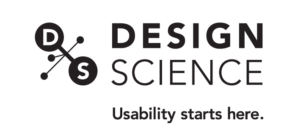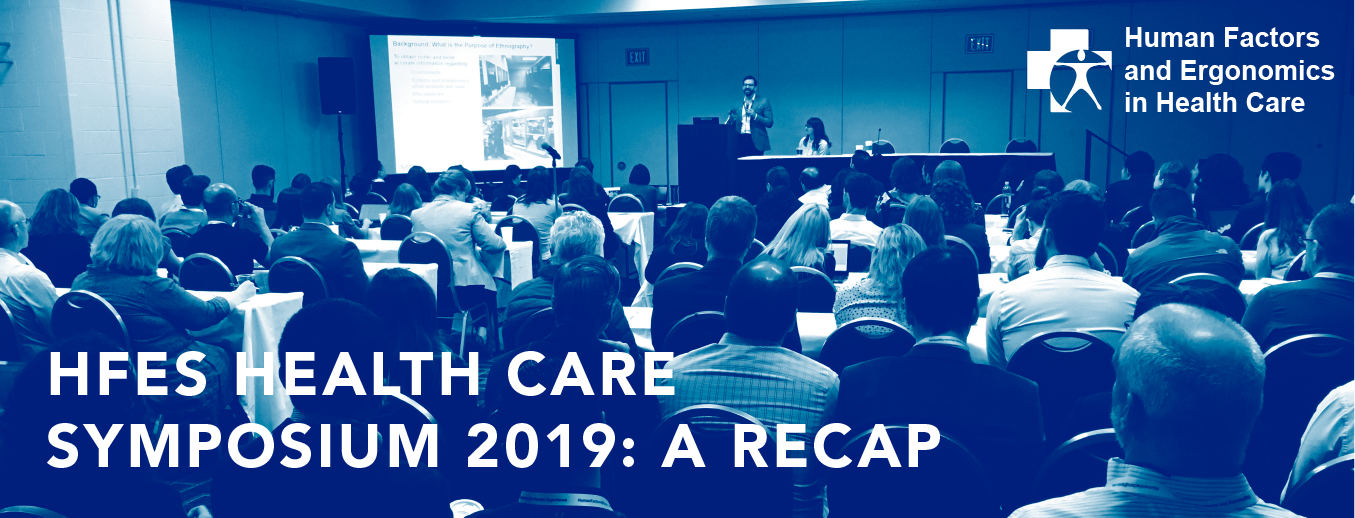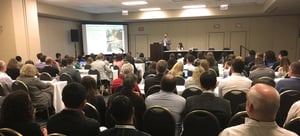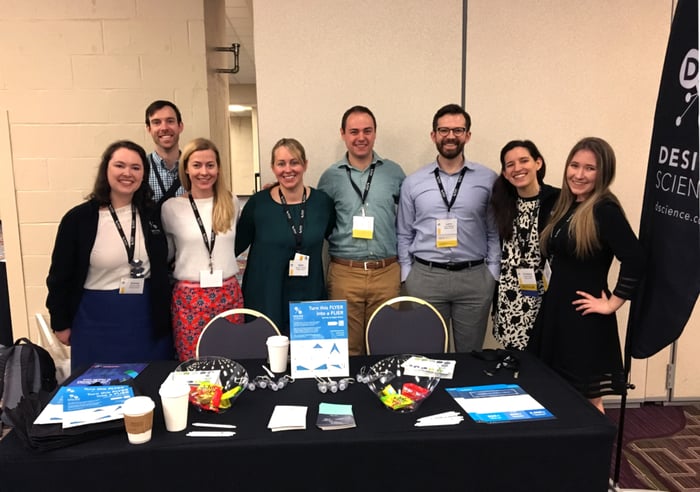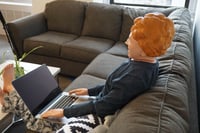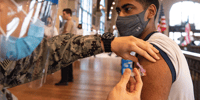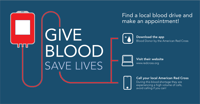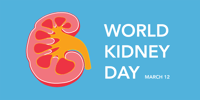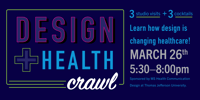HFES Health Care Symposium 2019: A Recap
/ in chicago , conference , healthcare , healthcare symposium , HFES , news / by Christina STwo weeks ago, we had the pleasure of attending, exhibiting, and presenting at the 2019 International Symposium on Human Factors and Ergonomics in Health Care in Chicago, Illinois. As a multi-disciplinary team, it’s always fun to check in after a conference to find out what different team members found valuable or inspiring. Here are our takeaways:
Peter Sneeringer
Research Director
One of the most interesting things I learned at the HFES Health Care Symposium is that only 10–15% of 510k submissions get accepted right away without deficiencies. One main area of deficiency (as far as human factors is concerned) is around the use-related risk assessment. Therefore, the human factors part of the submission needs to do the following:
1. Contain a thorough and easy to understand use-related risk assessment
2. Document the primary and secondary research conducted that resulted in that use-related risk assessment
3. Clearly link the use-related risk assessment to the use scenarios and critical tasks tested in the validation study
4. Document the root cause of all use events (observed and reported) from the validation study
5. Describe the residual risk of these use events
6. Provide a detailed benefit-risk analysis of the product as a whole
Angela Muriset
Research Director
Understanding aging populations: One of the most helpful sessions I attended was the panel “Challenges Confronting Older Adults in Today’s Healthcare Landscape: Design Guidance from CREATE.” The panel included leading academic researchers affiliated with the Center for Research and Education on Aging and Technology Enhancement (CREATE). Panelists conveyed the changing landscape of home healthcare, noting that the “oldest old”—individuals who are 85 years old and older—represent the fastest growing segment of healthcare users.
With over 80% of older adults having at least one chronic health condition, this group is also characterized by unique challenges when it comes to managing their health, including condition-related declines in cognitive abilities, lack of social support, and barriers to adopting technology. As technology’s role in home healthcare continues to increase, the panel offered many concrete examples of how to employ user-centered design that is respectful and responsive to the needs of older adults. One recommended method was to include them on early activities like cognitive walkthroughs that focus on their unique challenges when interacting with health-related technology (e.g., cognitive or physical challenges using a healthcare app).
Christina Stefan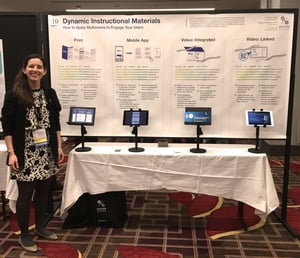
Sr. Design Researcher
Poster, evaluating interactive instructions: Monday night’s poster session was the highlight of the conference for me. I presented a poster on “Dynamic Instructional Materials: How to Apply Multimedia to Engage Your Users,” which I had co-created with design and video team members. We often create instructional materials (e.g., Instructions For Use [IFUs], quick reference guides [QRGs], and user manuals) to support our client’s FDA submissions. As digital media has become increasingly ubiquitous in both the consumer and medical space, we’ve begun seeing advances in its integration in the instruction design arena as well. We put together a poster that evaluated the pros and cons of various methods of presenting instructional materials—ranging from the standard print IFU to high-tech integrated video brochures. The latter is a novel technology that allows companies to send small tablets, which include an instructional video, directly in the packaging of the product.
Our poster sparked a lot of great dialogue about which media would count as easily accessible (and therefore standalone) instructions. The FDA currently does not tend to approve apps or linked video instructional materials unless they are accompanied by a print IFU—in which case they are considered supplemental and are not prone to the same scrutiny as the central print IFU. This is because the manufacturer cannot guarantee users have access to a smart phone or computer. Additionally, we discussed with attendees that the high price point likely means that manufacturers will reserve this technology for complex devices or rare diseases, where significant training is distinctly valuable. We’re interested to see if video brochures become more prevalent in coming years!
Larry McGrath
Researcher
Presentation, emergency department ethnography: In our talk, “Emergency Ethnography,” I presented some recent observations that we carried out in emergency departments across Europe, the United States, and Asia. Understanding these diverse environments is crucial to helping our clients tailor devices and drug delivery systems to global markets. Conventional research tools won’t do. I argued that contextual inquiry is uniquely suited to uncover not only variance among contexts, but also rich details about the mundane (and often reflexive) practices involved in fast-paced crisis scenarios. As a case study, I showed how our team followed neurologists, radiologists, physicians, and nurses as they conducted rapid response treatments on patients with acute ischemic strokes. The results informed design criteria for a drug and device kit, which we conceived both to improve stroke treatments and to fit the distinct parameters of various hospitals. Ultimately, ethnography does not provide answers to all medical questions. However, it is indispensable to optimizing products and procedures in emergency departments.
Emma Levitt
Human Factors Engineer
Engaging with clinicians: As a Human Factors Engineer, I found the sessions starring perspectives from clinicians to have the most valuable takeaway. I enjoyed learning about a time and motion study conducted by a team under the direction of Megan Carter, a nurse by trade at Baptist Health University, whose goal was to increase time spent in direct patient care in her hospital. By using these simple timing metrics and intentionally engaging nurses to help drive improvements, they successfully reduced the number of daily interruptions and increased time with patients. How? By implementing an intuitive hierarchical communication system.
Clinicians from the “Integrating Human Factors Research and Clinical Practice: Clinical Perspectives” session discussed how they are seeing how human factors professionals (not just engineers!) can add value to healthcare. We, as human factors professionals, are challenged to clearly communicate our purpose and how we can share knowledge to improve the workflow in today’s healthcare. All we need are a few procedure maps and data to back it up! Overall, it was inspiring to see human factors at work in healthcare, but we still have a lot of work left to do! Next up: reducing workload on patients as they navigate the healthcare system.
Austin Wanek
Associate Engineer
Multimedia deliverable concepts: One of the presentations I most enjoyed at HFES was “I Want to Learn in Context!” The presentation walked the audience through a hospital wing using multiple still images taken with 360 cameras that were strung together to create an interactive walkthrough. These 360 cameras were placed in specific locations throughout the hospital wing, such as patient chairs and high-traffic locations, to create an interactive experience that a person can view on a computer browser or through a virtual reality (VR) headset. This allows the viewer to experience the hospital wing through the eyes of a patient, HCP, or as a fly-on-the-wall observer, affording research teams the opportunity to collect and display contextual research in a unique and more holistic manner. While still-image-based VR can be less valuable in the dynamic hospital environments we typically conduct research in, we’re excited to explore the possibilities of video-based VR.
Anna O’Donnell
Associate Engineer
Collaborative innovation: For me, the highlight of HFES 2019 came on the last day of the conference when a series of five panelists presented their work on increasing alarm audibility and intuitiveness in hospital environments. Though they came from a diversity of backgrounds—anesthesiologists, researchers, and professors—the separate work of each panelist built off each other to create something more robust and more cohesive than any individual could have produced. Together, their work has been so successful in improving alarm systems that they are currently updating the International Electrotechnical Commission standards for alarms throughout hospitals to keep more patients safe and healthy.
Share this entry
-
Share on Facebook
Share on Facebook
-
Share on Twitter
Share on Twitter
-
Share on Google+
Share on Google+
-
Share on Linkedin
Share on Linkedin
-
Share by Mail
Share by Mail
